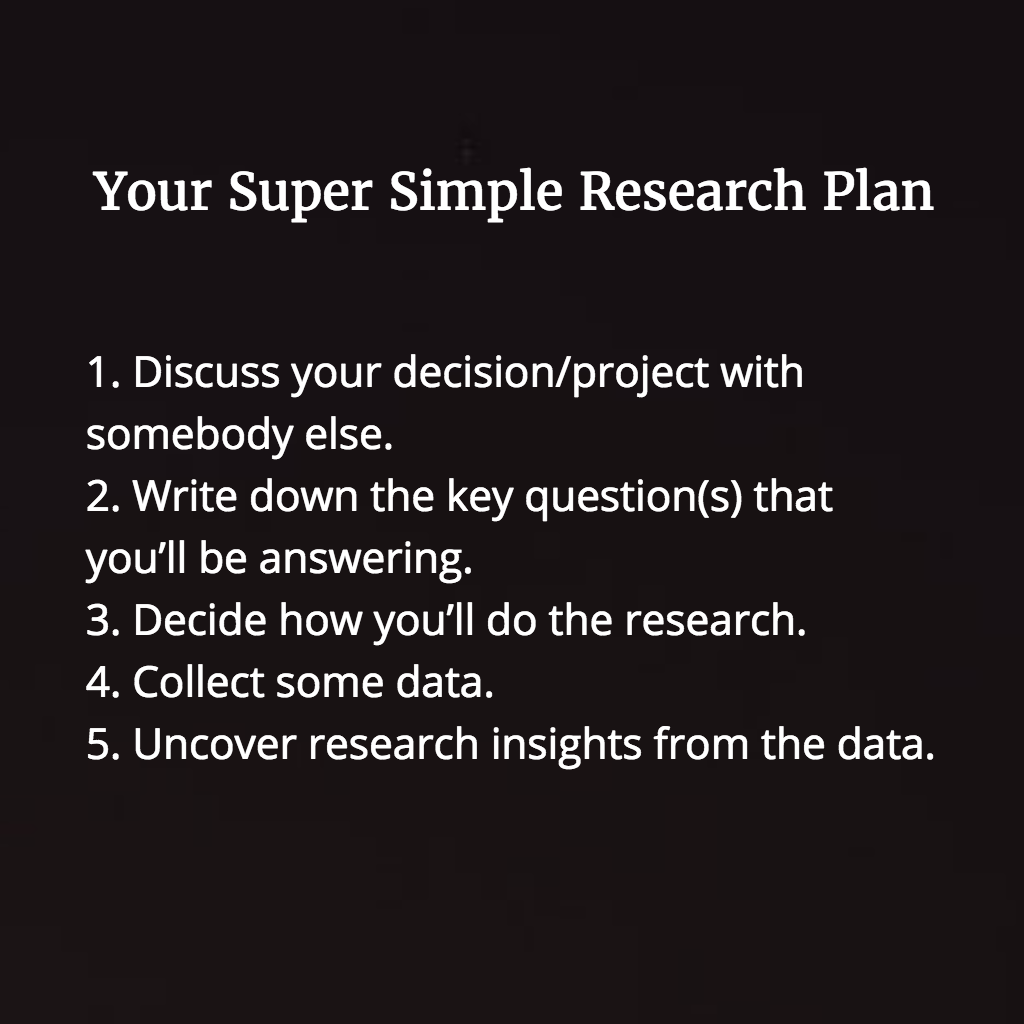
This is Exactly Why And How We Do Customer Research at Buffer
It’s pretty difficult to get excited about research, right? It’s not exactly the most flashy subject and I don’t really know any kids who dream of doing customer research when they grow up.
Yet, if you dig into the practices of the most successful companies of the past few decades such as Amazon, Airbnb, and IBM, it’s clear that customer research plays a key role.
In this post, I’ll explain why customer research is crucial, and how you can get started with this practice.

Why Even Bother Doing Research?
First, some unpopular news.
We all know a lot less than we think we do.

It sad, but it’s true. There’s scientific evidence to back up this claim, and it’s further confirmed when you think through your own experience.
Can you remember being absolutely sure about something and then turning out to be wrong about it?
- The Instagram post that you knew would get a whole lot of love (maybe even go a little viral) but was only liked by your best friend and a random lurker.
- The sports team or candidate that you said was guaranteed to win but somehow lost.
- The meal that you knew your kids would love that they flat out rejected (I’ve got some personal experience with this one).
This overconfidence happens a lot, and it’s not because we’re unintelligent.
It’s because human behavior is nearly impossible to fully know and predict.

I was recently trying to learn how social media marketers spend their day. I had some assumptions about how much time content creation, social media engagement and other tasks would take, based on all my (many) interactions with people in this role.
Of course, it turns out I was dead wrong about my assumptions, even though I have lots of experience speaking with social marketers.
Erika Hall articulates the remedy for this problem:
“There’s nothing wrong with wanting to have the right answer — it’s a good thing. But you don’t start by just having the answer inside you. You have to ask questions.“
Questions help us close the gap between what we know and what we think we know.
That’s really the essence of research and the main reason why we do it — asking the right people a bunch of good questions to broaden knowledge (and better predict what other people will do).

When To Do Research
Every day at Buffer, our team makes hundreds of decisions that shape the work and future of our company.
- When to launch a blog post
- How to refactor code
- What to include in a product cycle
It’s a helpful practice to ask questions for all these types decisions, but substantive customer research isn’t required for every single choice.
The need for research depends on:

1. Higher Impact + Not Much Knowledge (e.g. pricing changes)
This is the obvious one. If we’re deciding something that could significantly affect customers, we need to do some deep research.
2. Higher Impact + Lots of Knowledge (e.g. building a new feature, significant UI changes)
This is the most problematic area because it’s easy to confuse what we know with what we think we know. Even if we do know a lot about a subject, it’s always wise to conduct some research when it’s a high impact decision.
3. Lower Impact + Not Much Knowledge (e.g. button color change)
Despite the smaller effects of these types of decisions, it’s always wiser to do a little research (e.g. get advice from teammates, running a very short survey) instead of relying on personal assumptions.
4. Lower Impact + Lots of Knowledge (e.g. creating a landing page)
For these decisions, getting team advice is likely sufficient. In-depth research might be a waste of time and resources.

How to do Research
So, you’ve made it this far – time to get started with some research!
There are lots of ways to go about this, but we generally use a five-step process.

- Start off by talking to someone about whatever decision/project you’ll be working on.
- This step will help to better determine the level of impact and knowledge you have about the decision/project that you’re undertaking.
- A discussion will also help to determine whether the research is necessary at all (e.g. someone else might have already done similar work).
- Once you’ve talked about your decision/project, write down the one to two key questions that you’ll be answering through this research.
- This is really important – effective research requires targeted questioning. Research that feels ineffectual often lacks focus on a few key issues or tries to cover too many topics.
- Interviews and surveys are two of the most common research methods used at Buffer (of course, you’re welcome to use other techniques). In a future post, I’ll break down how to best use these methods.
- Irrespective of the method, what’s most important is questioning the right people. Make every effort to be very careful when selecting the target group who’ll be giving you feedback.
- Research time!
- The one big tip for this step is looking out for your personal biases. We generally look to disprove our assumptions instead of validating them (i.e. conduct interviews/surveys with an eye to prove yourself wrong – if you’re not wrong, it’ll be really clear to see).
- Once you have data, analyze it to uncover insights.
- It’s really easy to be biased and have blind spots during this step — try to include someone else in the analysis for more rounded perspective to the findings.
- Voila — you’re done! Use the research insights to take the next step in your decision/project.
It can feel a little intimidating getting started, but customer research is not anywhere near as complicated as it seems. If you adopt the right approach, you’ll quickly close the gap between what you know and what you think you know.
Over to You
This is how we do research at Buffer, but it would be great to learn how you do customer research at your company.
Do you use different methods? How long does research generally take for you? How often do you do it?
I’d love to hear more in the comments below!
Photo by Geraldine Lewa
Try Buffer for free
180,000+ creators, small businesses, and marketers use Buffer to grow their audiences every month.
Related Articles

We’ve always had teammates who have side projects in addition to working at Buffer. Working on new projects, building, experimenting, and self-improvement are built into our DNA as a company. So it's quite common to be speaking with someone only to find out they own a small business outside of Buffer that started as a side project. We also have several published authors and many apps built by Buffer teammates. We believe this entrepreneurial spirit and creative drive not only enhances our indiv

Every year since 2016 we've closed Buffer for a week at the end of the year. It’s like a reset, except across the whole company.

In this article, the Buffer Content team shares exactly how and where we use AI in our work.